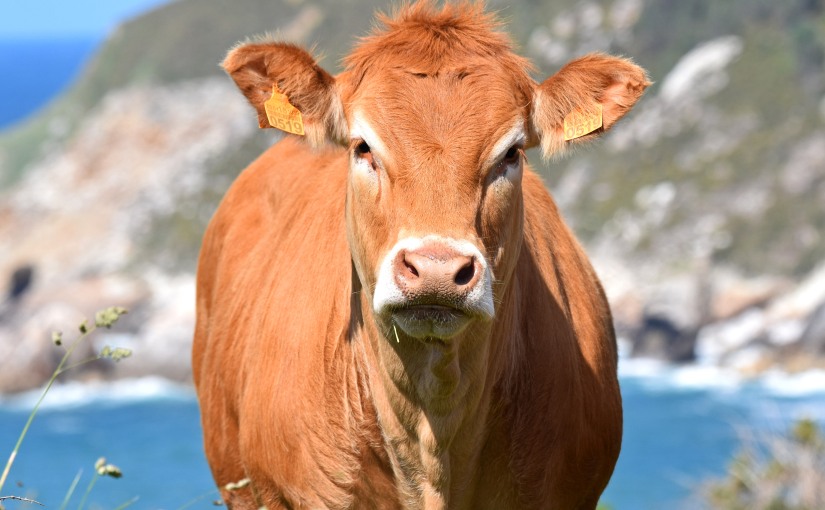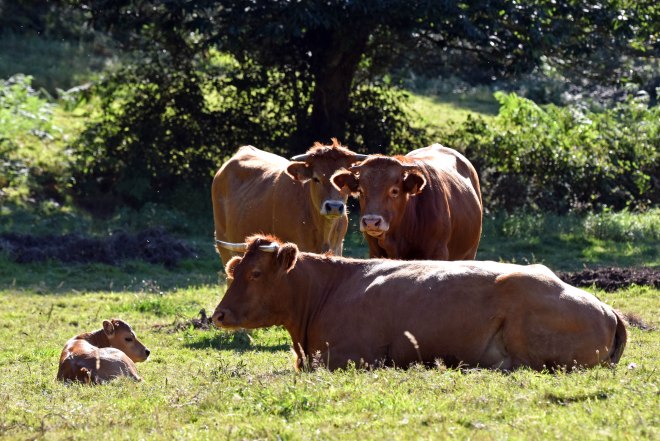
Readers of my blog may know that I am a frequent visitor to the Province of Galicia, in NW Spain. There are many reasons to visit this attractive region, tucked away on the shoulder of the Iberian peninsula: the beautiful countryside, the empty beaches, the cold waters of the Atlantic!, the cuisine, the rustic architecture, the Gallegan culture (Gallego is the native language of Galicia) and so on. But one I have not dealt with before, is the cows!

Galician cows are adorable. First of all they are such an attractive colour. The commonest breed by far, is the Rubia Galega, or the Galician Blond beef cow. Whether or not you are a meat-eater, I think it is fair to say that these animals are well-treated and seem to me to have a very comfortable existence. As these photographs show, they are usually to be seen sitting in an idyllic meadow, quietly chewing the cud, far away from any stress or hassle!

Galicia is a rural land of smallholders, with many small farms and scattered plots. Whilst agriculture in this autonomous region is becoming more intensified, it seems to be much more small-scale and self-sufficient than many others parts of Europe. Whilst that might not be good for productivity and profits, it certainly is good for cows!

Alas, this quiet, small-scale way of life is probably not sustainable in the long term. Galicia has been changing since the 1950s, but it is still a relatively poor area – compared to other regions of Spain – without too much major industry, and a largely rural economy. Many people have left Galicia to look for work elsewhere, in Europe, and the rest of the world. So, many of the traditional stone farm houses – with their characteristic slate roofs (below) have been left to slide back into the earth from which they came!

I get the impression that, like a lot of agricultural communities (the UK included), the people working the land are getting on in years. Whilst it may be an idyllic and healthy life-style for some, running a small farm or smallholding does not make much money. Yet there must be opportunities to turn this unspoiled and pristine land into high value – i.e. high quality – crops, be they plant or animal.

Galicia is a very tranquil and uncrowded part of Europe. Most foreign tourists head to the beaches on the Mediterranean coasts of Spain. The Spanish themselves know to head north (not south!) in summer, and some parts of the coast do fill up a bit in August. But for the most part, Galicia is remarkably uncrowded, the roads are largely empty (by UK standards), and the cows get to life in peace and harmony! Have I painted an attractive enough picture yet?!
There are other cows in Galicia, including plenty of black and white Friesian milk cows in some areas, and a number of rare breeds. One of the strangest is the Cacehna cow (below), which seems to be a sort of all-purpose cattle breed; it can be used as a draft animal, for milk and for meat.

Of course one reason why Galicia is so good for cows, is the grass! And the grass is good because it rains! But the climate is mild. Galicia, sticks out into the Atlantic, so expect sunshine and showers most days, and you will not be disappointed! So I’ll finish with a cow enjoying the sunshine in early June, by the sea.


